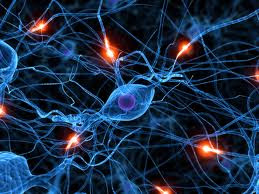
La capacidad plástica que tenemos nos pemite facilitarnos o complicarnos la existencia. En nuestros circuitos nos permite aprender y tener capacidad de cambio, aunque ese aprendizaje y cambio que realizamos e insertamos en nuestra memoria puede ser tanto positivo como negativo. Por tanto aunque esa cualidad es fundamental, la gran oportunidad de que disponemos como humanos es la capacidad de dirigir el cambio de un sentido a otro.
Hay varias posturas neurocientíficas que afirman que podemos influir en nuestra capacidad plastica mediante la administraciónde determinados fármacos, con la estimulación electromagnética transcraneal y modulando nuestra atención.
Este último proceder, la modulación de la atención es que interesa. Es una función cognitiva de alto nivel con loa que podemos trabajar y decidir que circuitos estimulamos y cuáles dejamos de estimular, de manera que los circuitos que se estimulan, se refuerzan, y los que dejamos de estimular, se desconfiguran.
Si inicialmente es la emoción la que dirige la atención, podemos
reconducirla hacia otra observación, que emerja como relevante, gracias a la corteza prefrontal, situada detrás de la frente e integrada en los lobulos frontales encargados de procesar la información de alto nivel y últimos responsables de nuestra conducta. Donde centraremos la atención mental, invertimos energia. Cuando se presta atención a algo, nuestro cerebro crea conexiones sinápticas. Si nuestra observación mental - es decir, nuestra atención consciente o inconsciente- está centrada en aspectos negativos, se traduce en cambios neurobiológicos negativos.
Si centramos la atención en aspectos positivos, su consecuencia neurobiológica será positiva tambien, y si ese proceso se repite una y otra vez, tanto en un sentido como en otro. conseguiremos automatizar esos circuitos y que forman parte de nuestro "disco duro", traduciendose en patrones de pensamiento, sentimientos y comportamientos negativos o positivos.
La intensidad emocional de la experiencia, influye en ese proceso de aprendizaje y en la memoria, de manera que son más permanentes aquellos que han tenido un alto contenido emocional. El entorno modifica el cerebro durante toda nuestra vida. Si no fuera asi, no seriamos capaces de modificar ni formar nuestra memoria. Después de nuestra salida al mundo, la exposición al entorno representa una influencia capital, para hacerse una idea, en los primeros dos años de nuestra vida, somos capaces de crear y no casualmente, hasta dos millones de sinapsis por segundo.
Y aunque la plasticidad disminuye con la edad, no desaparece, y tenemos capacidad de estimularla.
The plastic capacity that we have us pemite to facilitate us or to complicate the existence. In our circuits to we allow to learn and have change capacity, although this learning and change that we realize and insert in our memory can be both positive and negative. Therefore although this quality is fundamental, the big opportunity which we have like human beings is the aptitude to direct the change of one sense to other.
There are several positions neurocientíficas that affirm that we can influence in our plastic capacity by means of the administraciónde certain medicines, with the electromagnetic stimulation transcraneal and modulating our attention.
The last one to proceed, the modulation of the attention is that it is of interest. It is a cognitive function of high level with praise that we can work and decide that we stimulate circuits and which we stop stimulating, so that the circuits that are stimulated, are reinforced, and those that we stop stimulating, desconfiguran.
If initially it is the emotion the one that directs the attention, we can reconducirla towards another observation, which emerges like excellent, thanks to the prefrontal crust placed behind the forehead and integrated into the frontal lobes entrusted to process the information of high level and last persons in charge of our conduct.
Where we will center the mental attention, we invest energy. When
attention is paid to some, our brain believe connections sinápticas. If our mental observation - that is to say, our conscious or unconscious attention - is centred on negative aspects, it is translated in changes neurobiológicos negative.
 If we center the attention on positive aspects, its consequence neurobiológica will be positive also, and if this process recurs repeatedly, so much in a sense as in other. we will manage to automate these circuits and that they are part of our "hard disk", being translated in bosses of thought, feelings and negative or positive behaviors.
If we center the attention on positive aspects, its consequence neurobiológica will be positive also, and if this process recurs repeatedly, so much in a sense as in other. we will manage to automate these circuits and that they are part of our "hard disk", being translated in bosses of thought, feelings and negative or positive behaviors.
The emotional intensity of the experience, influences this learning process and the memory, so that there are more perms those that have had an emotional suppressed high place. The environment modifies the brain during all our life. If it was not so, we would be capable of modifying neither to form our memory.
After our exit to the world, the exhibition to the environment represents a cardinal influence, to do an idea to him, in the first two years of our life, we are capable of creating and not by chance, up to two million sinapsis per second.
And although the plasticity diminishes with the age, it does not disappear, and we have aptitude to stimulate it.






No comments:
Post a Comment